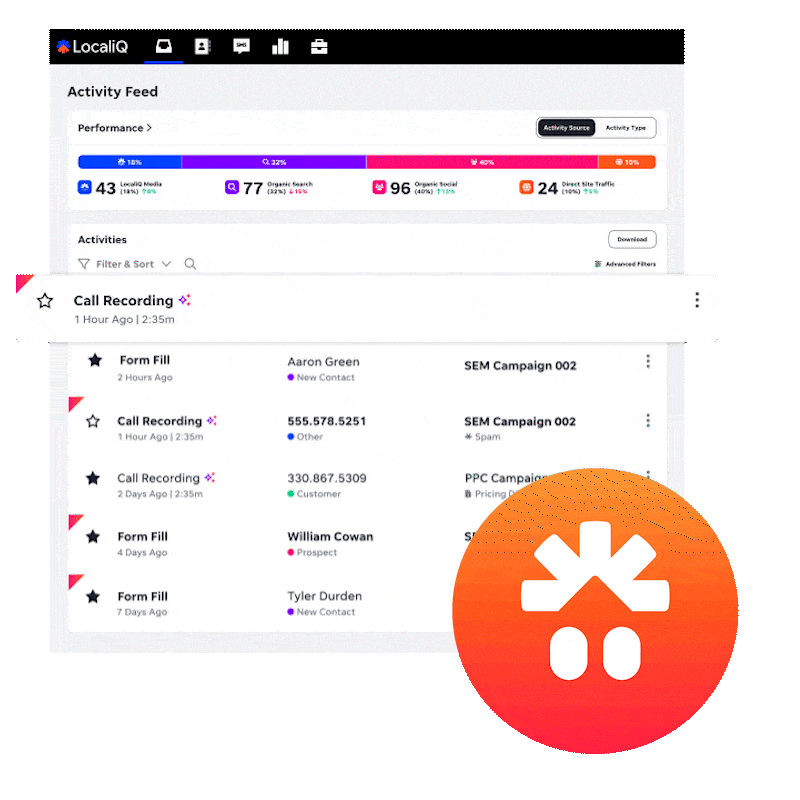- Blog
- Market Gap: Marketing Mistakes Costing You Customers
Do your marketing efforts feel like shouting into the void? Are your marketing campaigns failing to attract the right audience, costing you customers and revenue due to a weak value proposition? This article delves into the often-overlooked market gap and how marketing mistakes that are costing you can be detrimental to your business.
Common Marketing Mistakes
Several common marketing mistakes could be costing you clients. These errors often stem from a few key areas, such as perceived value and market position:
- A lack of clear target audience definition
- Ineffective marketing materials
Ignoring market research, failing to adapt to evolving market trends, overlooking customer feedback, and neglecting competitor analysis can further hinder your brand’s growth and customer experience, steering customers straight to your competitors.
Impact of Poor Marketing Strategies
Poor marketing strategies have a ripple effect, impacting customer satisfaction and ultimately costing you customers. A poorly designed customer journey can lead to frustration, while neglecting to address customer needs creates a market gap, which can be exploited by competitors. Inconsistent messaging damages brand credibility, hindering new customer acquisition and impacting conversion rates, ultimately affecting your unique value.
Real Results from Effective Marketing
Effective marketing, in contrast, drives tangible results by addressing the market gap. Through comprehensive analytics and customer journey mapping, it becomes possible to streamline processes, improve customer experience, and boost customer satisfaction. Well-targeted marketing campaigns lead to higher conversion rates, increased brand loyalty, and ultimately, a steady stream of new customer acquisitions, enhancing your market position.
Identifying Market Gaps
What is a Market Gap?
A market gap represents an unmet customer need or a pain point that is not adequately addressed by existing products or services. It’s an opportunity where demand exceeds supply or where current offerings fail to deliver optimal customer satisfaction. To identify market gaps requires diligent market research, competitor analysis, and a deep understanding of the customer journey to enhance your sales and marketing strategy.
Ways to Spot Market Gaps
There are several ways to spot market gaps. Analysing customer feedback, conducting surveys, and monitoring social media trends can reveal unmet needs and frustrations. Tools like customer journey mapping can highlight pain points and areas where the customer experience falls short. Furthermore, competitor analysis helps to identify underserved segments and areas where your product or service can differentiate itself, preventing it from costing you customers.
Conducting Gap Analysis
Conducting a gap analysis involves a systematic assessment of your current marketing strategies and their effectiveness in addressing customer needs. This process requires an audit of your marketing materials, a review of your target audience, and an examination of your competitor’s offerings. The analysis helps you identify areas for improvement and uncover the market gap that your business can fill to address customer needs.
Using Analytics to Improve Marketing Strategies
Importance of Analytics in Marketing
The integration of analytics is paramount for optimising marketing strategies and preventing marketing mistakes that are costing you customers, thereby enhancing your perceived value. Using analytics enables businesses to gain a comprehensive understanding of customer behavior and preferences, ultimately improving user experience. Analysing customer journey data can help identify pain points and areas where the customer experience can be improved. This insight can then be used to refine marketing campaigns and boost conversion rates, leading to a better customer experience.
Customer Journey Analysis
Customer journey analysis is a powerful tool that allows marketers to understand how customers interact with a brand across multiple touchpoints. By mapping out the customer journey, businesses can identify friction points and opportunities for enhancement. This process streamlines the customer experience, improves customer satisfaction, and prevents customers going straight to your competitors. Ultimately, this minimises the chances of costing you clients due to a poor journey.
Using Data to Identify Market Opportunities
Leveraging data is essential for discovering new market opportunities and addressing existing market gaps. Market research enables businesses to identify unmet customer needs and areas where their product or service can differentiate itself, enhancing their unique value. By analysing market trends and customer feedback, companies can identify potential market gaps that they can fill, and drive new customer acquisition. Such data-driven approaches allow you to identify market gaps.
Conducting Competitor Analysis
Why Competitor Analysis is Crucial
Competitor analysis is a crucial component of any successful marketing strategy. This process involves evaluating the strengths and weaknesses of your competitors to identify opportunities for differentiation and improvement. By understanding what your competitors are doing well (or poorly), you can refine your own marketing efforts and better meet customer needs. This is necessary to prevent it from costing you customers and stay ahead.
How to Conduct Competitor Analysis
To effectively conduct competitor analysis, it is essential to gather comprehensive information about your competitors’ marketing strategies, product or service offerings, pricing, and target audience. This can be achieved through website reviews, social media monitoring, and customer feedback analysis. The goal is to identify their strengths and weaknesses, uncovering areas where your brand can gain a competitive advantage, avoiding costing you clients.
Leveraging Competitor Insights
The insights gained from competitor analysis can be used to inform your own marketing strategies and fill market gaps. By identifying areas where your competitors are falling short, you can tailor your product or service to better meet customer needs. This targeted approach can help you attract new customers, improve customer experience and ultimately drive revenue growth. This reduces the risk of marketing mistakes that are costing you customers.
Gathering Customer Feedback
Benefits of Customer Feedback
Customer feedback is invaluable for refining marketing strategies and preventing marketing mistakes that are costing you customers. It provides direct insights into customer needs and expectations, highlighting areas where your product or service excels or falls short. Acting on this customer feedback can improve customer experience, enhance customer satisfaction, and foster brand loyalty, ultimately driving new customer acquisition and reducing customer churn while strengthening your value proposition.
Methods for Collecting Feedback
There are various methods for gathering customer feedback to enhance better customer experience. Surveys and questionnaires can provide structured insights into specific aspects of the customer journey and customer satisfaction. Social media monitoring helps to identify trends and sentiments related to your brand. Direct customer interviews and focus groups offer deeper qualitative data, revealing pain points and unmet needs that might not surface through other channels and help you identify market gaps to improve your value proposition.
Integrating Feedback into Marketing Strategies
Integrating customer feedback into your marketing strategies involves systematically analysing the data collected and using it to inform your marketing campaigns. This data helps you identify market gaps and adjust your marketing materials to better address customer needs. By aligning your marketing efforts with customer feedback, you can improve customer experience, increase conversion rates, and prevent your marketing efforts from costing you customers.
Ways to Improve Your Marketing Approach
Best Practices for Effective Marketing
To improve your marketing approach, start with comprehensive market research to understand your target audience and market trends. Develop clear and concise marketing materials that communicate the value of your product or service. Utilise analytics to track the performance of your marketing campaigns and identify areas for improvement. Regularly conduct competitor analysis to stay ahead of the curve and avoid marketing mistakes that are costing you customers.
Implementing Changes Based on Analysis
Implementing changes based on analysis involves translating insights from analytics, customer feedback, and competitor analysis into actionable steps. Streamline your customer journey to reduce friction and improve user experience for a better customer experience. Refine your marketing campaigns to better target your audience and address customer needs. Regularly audit your marketing materials to ensure they are up-to-date and relevant, filling any identified market gap that might be costing you clients and impacting your sales and marketing efforts.
Maintaining Customer Engagement
Maintaining customer engagement is crucial for fostering brand loyalty and driving long-term revenue growth. To effectively engage your customers, consider these strategies:
- Provide valuable content and personalised offers.
- Encourage customer feedback and respond promptly to inquiries and complaints.
Build a strong online presence and engage with your audience on social media. By prioritising customer needs and continuously improving customer experience, you can minimise the risk of costing you customers and maximise new customer acquisitions.






